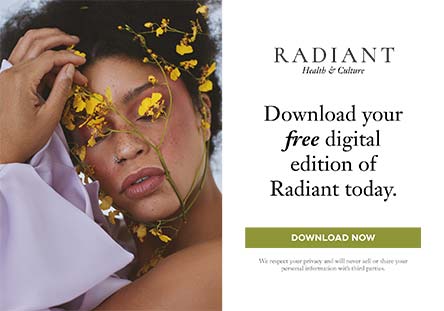Want To Make Better Food Choices? Read The Nutrition Label!
By Cordialis Msora-KasagoPublished: August 20, 2014

It is a tool that is easily found on hundreds of pre-packaged foods neatly displayed on supermarket shelves and yet the nutrition label is one of the most under-utilized health resources. Mandated by many governments, “Nutrition Facts” can help you make informed decisions about the food that you eat but first, you must know what to look for.
1. What’s the serving size?
Begin by looking at the serving size. Depending on the regulations of the country in which the food originated, nutrition information will be either be per 100g or per measured portion (e.g. 1 cup, 40g, 1 teaspoon etc.). If you eat more than 100g or the recommended serving size, you will eat double the calories, fat, sodium and other nutrients.
2. Eat more fibre, vitamins, calcium and iron
Fibre, calcium, iron and vitamins are all vital for good health. On the food label, most of these nutrients are expressed as % Daily Value or % Reference Index which is a percentage of the total amount of nutrients a person following a 2000 calorie (8,400 Kilojoule) diet gleans from eating the food.
If calcium, iron and vitamins are listed, opt for foods that provide 20% or more of each nutrient per serving. When it comes to fibre, include foods that provide at least 5g or more per serving or 1g for every 10g Carbohydrate.
3. Eat less sodium, fat, cholesterol and sugar
Diets high in sodium, sugar, fat and cholesterol are associated with chronic diseases such as obesity, hypertension, cancer and heart disease. Eating less of these nutrients will improve the quality of your diet.
Fat: Opt for food items with 3g or less of total fat or 1.5 g saturated fat per 100g. Avoid foods with trans fatty acids as they have been shown to clog your arteries and increase your risk of suffering a heart attack or stroke.
Sodium (salt): Choose foods with 0.1 g of sodium (0.3g salt) or less per 100g. Alternatively, where serving size is provided, pick foods in which the total amount of sodium is less or equal to the calories per serving. However, do not consume foods with more than 250mg sodium per serving.
MORE READ: “Less Salt, Please!” Rethink The Cube
Sugar: Avoid foods with more than 5g of total sugars per 100g.
To help you easily determine if a food item contains high, medium or low amounts of fat, saturated fat, sugars and salt, some food items may have a color coded Reference Intakes graphic posted on the front label.
Red means high: Cut down intakes of this food
Amber means medium: Okay choice, but proceed with caution
Green means low: Healthy choice! Eat more of this food.
4. Ingredients
Ingredients are what make a food and therefore an essential part of the nutrition label. They are listed according to weight with the main ingredient always coming first. Usually, the first 3 ingredients are the most important as they indicate the main items in a food. Select foods which include healthy ingredients such as whole grains and avoid those that contain partially hydrogenated oils which are associated with harmful trans fats. Also, be on the lookout for added sugars and salt often indicated by words such as corn syrup, agave, dextrose, fructose, maltose, sodium, monosodium glutamate, sodium bicarbonate and sodium nitrate.
5. A word about protein and carbohydrate
The average Nigerian consumes adequate amounts of protein and carbohydrates daily. For this reason, unless you are on an eating plan that requires you to monitor your total carbohydrate and/or protein intakes, there is really no need to pay special attention to these sections. More emphasis should be placed on getting enough healthy nutrients and decreasing those that are detrimental to good health.
Although the food label is a mainstay of many pre-packaged foods, it is a relatively new tool in Nigeria. Until the science evolves and trained food scientists get the tools that they need to conduct complete and accurate nutrient analysis, some locally packaged foods may not have all the information you need to manage your health. Should that happen, use foods that are in the same food group as a general guide or consult a Registered Dietitian for assistance.
Remember, it is not one nutrient that makes you healthy, but the sum of your entire diet that matters.
Here’s to your health!
Like what you're reading? Sign up for our free newsletter and never miss a post! Plus get a FREE digital version of our Issue No.10 with sign up.

- 5 Foods That Reduce Your Risk For Cancer - April 28, 2015
- 5 Diet Blunders That Are Increasing Your Risk For Cancer - April 28, 2015
- Defeating Diabetes: The Best Way to Beat It Is to Never Develop It - November 4, 2014
- Planning Vegetarian Meals That Meet Your Nutritional Needs - June 17, 2014
- Clean Eating: What You Need To Know - September 16, 2015
- Want To Make Better Food Choices? Read The Nutrition Label! - August 20, 2014
- Breastfeeding: The Winning Goal For Life - August 1, 2014
- Juices Or Smoothies: What’s Best for Health? - October 14, 2014
- 11 Delicious Ways to Eat More Beans, Peas and Lentils - January 19, 2016
- Moin-Moin: To Peel Or Not To Peel The Beans - July 16, 2014











